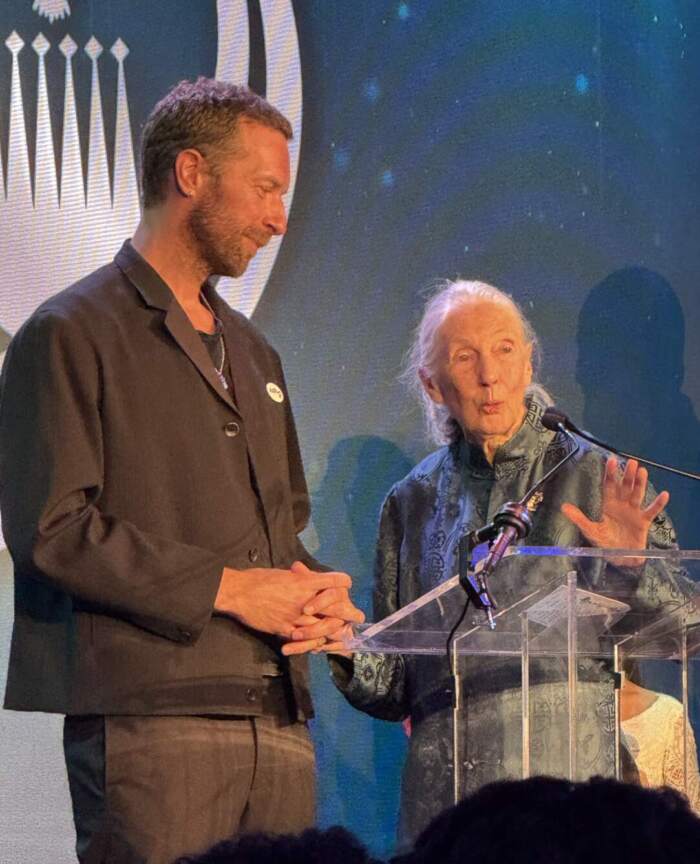When Jane Goodall first appeared on the cover of National Geographic, the letters arrived in stacks. Men wrote to complain that she had “good legs,” as if the shape of her body overshadowed the weight of her work. Goodall, in her way, answered not with protest but with gratitude. She thanked her legs for carrying her across the forests of Gombe, standing steady through storms and spotlight, and walking her into the heart of scientific history. Those legs climbed tree roots, crouched in the underbrush, and kept her balanced on the steep slopes of the Rift Valley, while she wrote the first chapter of a story that reshaped how we understand life on Earth.
But before the letters, before the cameras, and before the PhD (that came without a prior degree), there was a little girl in England, thin and determined, who carried her curiosity like a library card in one hand and clung to Tarzan of the Apes in the other. She read it at age ten and felt something tighten in her chest. Tarzan, she thought, had made a mistake. He had married the wrong Jane. She felt this not as a fleeting wish, but as a certainty. She knew her future would not stay bound between the pages of that book. She would go to Africa. She would live among animals. She would not wait for permission.
Goodall’s childhood brimmed with small, quiet acts of obsession. Her family remembers the time she vanished from view, only to be found hours later inside the henhouse. She had stationed herself there with the patience of a born field researcher, crouching low to observe – with the curiosity of a child and the discipline of a field researcher – the exact way a chicken lays an egg. She had asked her mother the question, and when the answer felt incomplete, she chose to find out for herself. She watched the hen settle, saw the labor of the moment, saw the marvel of life sealed inside a fragile shell. And her mother, who had spent anxious hours searching for her, ready to call the police, did not scold her. Instead, she listened as Jane described every detail of the process she had witnessed.
That trust shaped her future – and shapes the future of how we tell the story of our time.
What began in a backyard hen house unfolded beneath the forest canopy, where patience would again reveal the unseen. She spent her early days there at a distance, sitting long enough that the chimpanzees would grow used to her presence. She allowed them to study her as much as she studied them. She carried notebooks and binoculars but knew that her true tools were time and respect. When she first observed chimpanzee David Greybeard using a blade of grass to fish termites from their mound, she recorded the moment with care. Until that moment, tool use marked the boundary between humans and the rest of the animal kingdom. Goodall saw that line dissolve in the forest dirt.
She tells these stories with the steadiness of someone who has fully lived them. Not as fables, not as props, but as evidence of what it takes to understand the living world. Her message has never relied on panic or slogans. She carries her truth the way she carried her supplies through the undergrowth – essential, precise, and grounded in experience.
Her way of telling stories carries people into the forest, until they feel the earth beneath their own feet. She offers the rainforest as a place to walk through, not just read about. She names her chimpanzees, describes their gestures, their family bonds, their grief, their joy – even when science advises they remain as numbers, stripped of identity. She recounts how the forest breathes differently at dawn, how the rain on the canopy carries the sound of renewal. She persuades famous musicians to mimic the calls of the wild, filling concert halls with animal voices. And at ninety-one, she still enjoys a glass of whiskey, her eyes bright with the same spark she carried as a young girl watching chickens lay eggs.
Through these memories, she transforms distant ecosystems into shared ground.
We trust Jane Goodall because she has walked the terrain herself. She has followed the tracks of primates and the migration of ideas. She has met world leaders and schoolchildren with the same conviction, carrying her message with clarity and grace. When she speaks of hope, it rises from a lifetime of watching resilience take root in unlikely soil.
Her legs have carried her far. Her stories carry us further.
Michael Kittilson works as a Research Assistant at the Center for Climate Journalism and Communication.
